Phulan Rani | |
|---|---|
| Born | 1928 Amritsar |
Phulan Rani (born 1928) is an Indian painter. [1] [2] [3] [4]
Phulan Rani | |
|---|---|
| Born | 1928 Amritsar |
Phulan Rani (born 1928) is an Indian painter. [1] [2] [3] [4]
Phulan Rani was born in 1928 in Amritsar. She belonged to a well to do Sikh family. Her mother died when she was an infant. Her father,Dr Ram Singh was a doctor. She showed a great interest in fine arts, particularly for painting and dancing. Dr Ram Singh encouraged and nourished his daughter with deep care and pride. “My life really began when I started painting at thirteen,” she writes. “I have wonderful memories of that period making pencil drawings on the margins of the school books, attempting to draw sketches of persons and things that interested me.” [2] She did not receive any formal training in art, but her education is in Liberal Arts and Psychology. She sought to watch other painters at work and slowly trained herself often working late into night. She followed the dictates of their inner urge even when in conflict with external necessity. She devoted more of her time to creative pursuits sometimes even at the expense of pressing her academic demands.
Rani married S. Shamsher Singh in 1944. Her husband had a love for fine arts. Together they raised a family and participated in the worlds of arts and letters in Punjab. They ran the New Modern High School in Amritsar, and Phulan taught art as well. Her Father-in-law Kartar Singh Bumra also had an interest in painting. After her marriage when Rani made a painting, Kartar Singh Bumra was much impressed with it and he encouraged her with a cash prize of Rs. 100 and also presented her a book. [1] She was happily married and in the new atmosphere to which great Kerala poet, Maha Kavi Sankara G.Kurup, referred in one of his letters addressed to her as " your happy home where poetry and art lead a blissful wedded life." [2]
Rani started to paint at the age of thirteen. She had a wonderful memories of that period making pencil drawings on the margins of school books. Rani received encouragement in the Simla Fine Art Exhibition [2] [3] held in 1948, her water color painting " The Dancer", done in wash style, took the first prize. Again in 1953, in the Silver Jubilee Fine Arts Exhibition of the Indian Academy of Fine Arts, Amritsar, presided over by Dr. Rajendra Prasad, her well known work, "Twin Sisters Day and Night", received a gold medal and her two other exhibits " Memory and Moonlight" and " Wayside Rest" were widely acclaimed and celebrated. [3]
Her activities associated with her position as the head of High School and as member of numerous social and literary organizations. She is a painter of varied rich spiritual experiences and even in her maturity she has retained the freshness of vision which is the special property of children and poets.
In 1955 she visited Kangra Valley and met Sobha Singh there. She brought her into close contact with the beauty of nature in its lush green terraced rice fields, its turbulent mountain streams, its dashing waterfalls and the endless ranges of the distant hills fading into the blue mist had a great impact on her mind of riotous carnival of beauty turned her overnight into a landscape painter and she started painting the eternally varying moods of this wonderful valley and its subtly evasive colors. In later years Phulan Rani in Amritsar and Sanat Kumar Chatterjee in Simla continued to paint in wash technique. Phulan Rani used the "wash" technique for melting colors to provide a romantic, poetic and emotional content to her works. [5] Within the course of next five years she painted hundreds of landscapes depicting the charm of the valley and an exhibition of these works were organized at Amritsar in 1962 and it was inaugurated by the Speaker of Lok Sabha. Her paintings "Waterfall at Bhavarna", "Macchial Kund in the Evening," "Nohra Richard's Cottage" and " The sunset at Tatehal" are outstanding for their lyrical appeal and mastery over medium of water color. Her love for nature is her love of flowers and her flower studies are among the finest.
During her cultural trip to Europe in 1970 in connection with concerts entitled "Indian Ragas through Music and Painting" at the universities and cultural organizations, she organized exhibitions of her flower paintings; and to the British, a nation of flower lovers, her exhibits made a direct appeal and many of her flower studies were acquired by private collectors and art connoisseurs. Her flower studies " A wild Rose Bush" and "Flowers in conch shell", which, though as subject seem very modest reveal her attitude to the world of nature.
Rani also held solo exhibitions in different cities if India like Poona, Bombay, Kanpur, Ranchi, Calcutta and Chandigarh and won acclaim on account of artistic excellence of her works, their graceful and tender purity of color of which "Strength and Grace" and "Wayside Rest" are admirable examples.
Rani did a series of flower studies, landscape scenes and life drawings. She also did works on domestic genre, she devoted herself entirely to such lyrically themes as "The Bride", "The Heart Broken" and "The Afflicted." The Afflicted being one of her greatest paintings and on which she worked for four years.
During the birthday celebrations of Guru Gobind Singh she was commissioned by Guru Gobind SIngh Foundation, Patiala, to paint the whole life of Master in thirty paintings which she did in record time. Again during the Birth-day celebrations of Guru Nanak, [1] in 1969, her pictorial biography of the great Guru won her an award of Rs. 1000/ from president Shri V.V.Giri. This book has been translated into English Braille for the benefit of the visually handicapped and has since been distributed among such centers all over the world. Her pictorial biography of Guru Tegh Bahadur, painted in the same strain, was selected for award by Punjab Govt. for being the best book of the year 1976-77. major episodes of Sikh Guru's life have been rendered with stately tenderness and compositional skill. [3]
She also painted a series of love legends like " The desert of Manju", Sassi of the Sorrows", "Mirza Sahiban", "The Lure of His Flute". Her nobly conceived and admirably rendered paintings like " The Poet", "Time and Beauty", "The Poet and the Muses", "Megh doot" and "The Great Singers" are filled with the spirit of high romance and together with her Raga paintings.
Portraiture also received a considerable share of her attention and in the extensive gallery of portraits. She go into the inner world of her subject and brings out all that is best and beautiful in it. Portraits of " Saint Ravidas", "Rishi Valmik" located at the Municipal Corporation Hall, Amritsar, "Guru Nanak" in Air India Office, San Francisco; "Guru Gobind Singh" in Sikh Temple, Manchester and "Galib" in the collection of N.S. Virdi. Her technical skills in modifying tone in subtlest gradations from light to dark distinguishes her portraits from work of other artists.
Besides her contribution to the art of painting, her work in juvenile literature is no less substantial, having authored about a score books on a wide variety of themes, ranging from art, science, classics, morals and biographies. Two of her books, namely " Paudayan-da-jiwan(Life of Plants)", " Germ-ate-Asin ( Germs and We)" have received state awards. [3]
Won first prize for “The Dancer” at exhibition in Shimla.
Received gold medal at the Silver Jubilee exhibit of the Indian Academy of Fine Arts at Amritsar, for her painting “Twin Sisters: Day and Night.”
Exhibition of landscapes at Amritsar. Exhibitions at Poona, Bombay and Kolkata. The Poona exhibit included 150 Kangra Valley paintings . These include “Waterfall near Bharvan,” “Waterfall at Andretta,” and “Road Through Rice Fields.”
This article has been adapted from Visions Of Beauty by Phulan Rani.
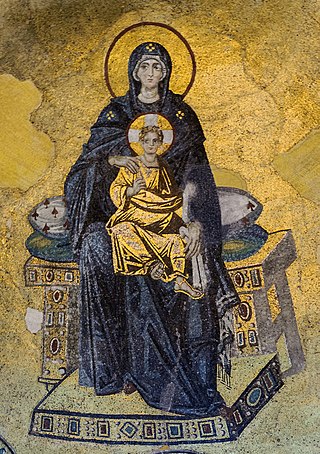
Religious art is a visual representation of religious ideologies and their relationship with humans. Sacred art directly relates to religious art in the sense that its purpose is for worship and religious practices. According to one set of definitions, artworks that are inspired by religion but are not considered traditionally sacred remain under the umbrella term of religious art, but not sacred art.

Ranjit Singh was the founder and first maharaja of the Sikh Empire, ruling from 1801 until his death in 1839. He ruled the northwest Indian subcontinent in the early half of the 19th century. He survived smallpox in infancy but lost sight in his left eye. He fought his first battle alongside his father at age 10.

The term Khalsa refers to both a community that follows Sikhism as its religion, as well as a special group of initiated Sikhs. The Khalsa tradition was initiated in 1699 by the Tenth Guru of Sikhism, Guru Gobind Singh. Its formation was a key event in the history of Sikhism. The founding of Khalsa is celebrated by Sikhs during the festival of Vaisakhi.

The Damdamī Ṭaksāl, Jatha Bhindra(n), or Sampardai Bhindra(n) is an orthodox Khalsa Sikh cultural and educational organization, based in India. They are known for their teachings of vidya as well as gurbanisanthiya. Its headquarters are located in the town of Mehta Chowk, approximately 40 km north of the city of Amritsar. It has been described as a seminary or “moving university” of the Sikh countryside.

Bhai Mani Singh was an 18th-century Sikh scholar and martyr. He was a childhood companion of Guru Gobind Singh and took the vows of Sikhism when the Guru inaugurated the Khalsa in March 1699. Soon after that, the Guru sent him to Amritsar to take charge of Harmandir Sahib, which had been without a custodian since 1696. He took control and steered the course of Sikh destiny at a critical stage in Sikh history. He was also a teacher of the Gianian Bunga, later becoming known as the "Amritsari Taksal", currently located in Sato Ki Gali.

Gurdwārā Bābā AṭṭalRāi is a famous Gurdwara in Amritsar dedicated to Atal Rai, a son of Guru Hargobind and Mata Nanaki. It consists of nine stories and is around forty metres in height. It is just a short walk from the famous Harmandir Sahib.
The principles of Sikhism state that women have the same souls as men and thus possess an equal right to cultivate their spirituality with equal chances of achieving salvation. Women participate in all Sikh religious, cultural, social, and secular activities including lead religious congregations, take part in the Akhand Path, perform Kirtan, perform Gatka and work as a Granthis.

Sobha Singh was an artist from Punjab, India.
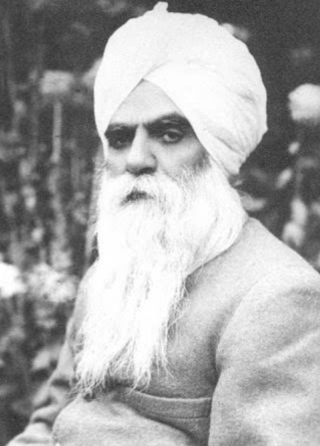
Vir Singh was a Sikh poet, scholar and theologist of the Sikh revival movement, playing an important part in the renewal of Punjabi literary tradition. Singh's contributions were so important and influential that he became canonized as Bhai, an honorific often given to those who could be considered a saint of the Sikh faith.

A kangha is a small wooden comb that Sikhs usually use twice a day and part of the Five Ks. It is supposed to be kept with the hair at all times. Combs help to clean the hair, and are a symbol of cleanliness. Combing their hair reminds Sikhs that their lives should be tidy and organised. The kangha makes the uncut hair neat and keeps away tangles. Kanghas were traditionally made of wood, but many modern Sikhs employ ones made of plastic.

Gurū Nānak, also known as Bābā Nānak, was an Indian spritual teacher, mystic and poet, who is regarded as the founder of Sikhism and is the first of the ten Sikh Gurus.
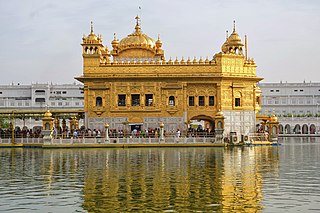
The Golden Temple (also known as the Harmandir Sahib, or the Darbār Sahib, is a gurdwara located in the city of Amritsar, Punjab, India. It is the pre-eminent spiritual site of Sikhism. It is one of the holiest sites in Sikhism, alongside the Gurdwara Darbar Sahib Kartarpur in Kartarpur, and Gurdwara Janam Asthan in Nankana Sahib.

Harbans Singh was an educationist, administrator, scholar and the editor-in-chief of the Encyclopaedia of Sikhism. He was respected for his contributions to Sikh scholarship and Punjabi literary studies and had a vital and pervasive influence in the field of religious studies, with special reference to Sikhism.
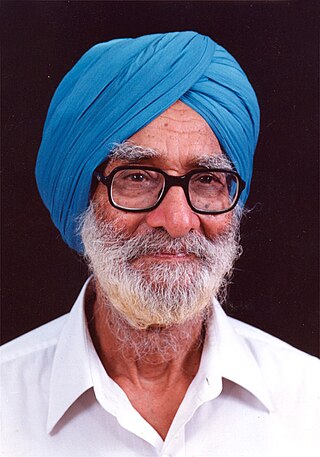
Dr. Harcharan Singh (1914–2006) was an Indian dramatist and writer in the Punjabi language. He dedicated 69 years of his life to Punjabi theater, in which he authored 51 books and staged numerous plays all over the world.
Sikh art, also known as the Sikh School, is the artwork created by or associated with Sikhs and Sikhism. Sikh artwork exists in many forms, such as miniature, oil, and watercolour paintings, murals, and wood carvings. The first Sikh artists were influenced by the Pahari and Mughal schools, however the ushering in of European influences during the colonial-age would transform Sikh art by adoping Western methods and tastes for artwork.
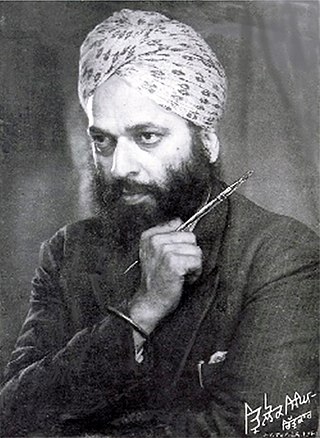
Trilok Singh Chitarkar (1914-1990) was a versatile Indian painter. He has unique style of presenting himself through variety of themes - Sikh religion, history, culture, folk lore, love legends, portraits, social evils, nature, illustration of Gurbani, Shabads, visuals in Punjabi Encyclopedia and books. He was well versed with deep knowledge of Gurbani, history and religion. He knew many languages i.e. Gurmukhi, Punjabi, Hindi, English, Urdu, Persian, Assamese and Bengali. He translated articles from Bengali to Punjabi and published these in the book titled Bangla De Daab in 1974. The Artist was honoured in 1973 by the Chief Minister, Punjab, India Giani Zail Singh at a state level function organised at his residence, Chitralok, Patiala. Language department, Punjab published a book in Punjabi-Chitralok's Contribution to Art and released on the 70th birthday of the artist, 10 December 1984 at a special function organised in Central Library at Patiala for his contribution to Art.

Sleep, also called Indu's Nude or Nude of Indira, is an oil on canvas painting by Amrita Sher-Gil, completed in 1933. It depicts a view from above of Sher-Gil's younger sister Indira, naked and lying on a white sheet at a diagonal, and with one raised arm. Just beneath her is a shawl depicting a dragon, whose body appears to flow in parallel with the flow of her hair and body curves.
Nikky-Guninder Kaur Singh, also known as Nikky Singh, is an Indian-born American scholar in Sikhism, and professor and chair of the Department of Religious Studies at Colby College in Waterville, Maine, USA.

Bishan Singh, also known as Baba Bishan Singh, was a Sikh painter whom achieved high-acclaim during his life. Much of his surviving works depicts scenes from the Sikh Empire and prominent figures of the era. His paintings have sold for large sums at auction.
{{cite book}}: CS1 maint: location missing publisher (link)